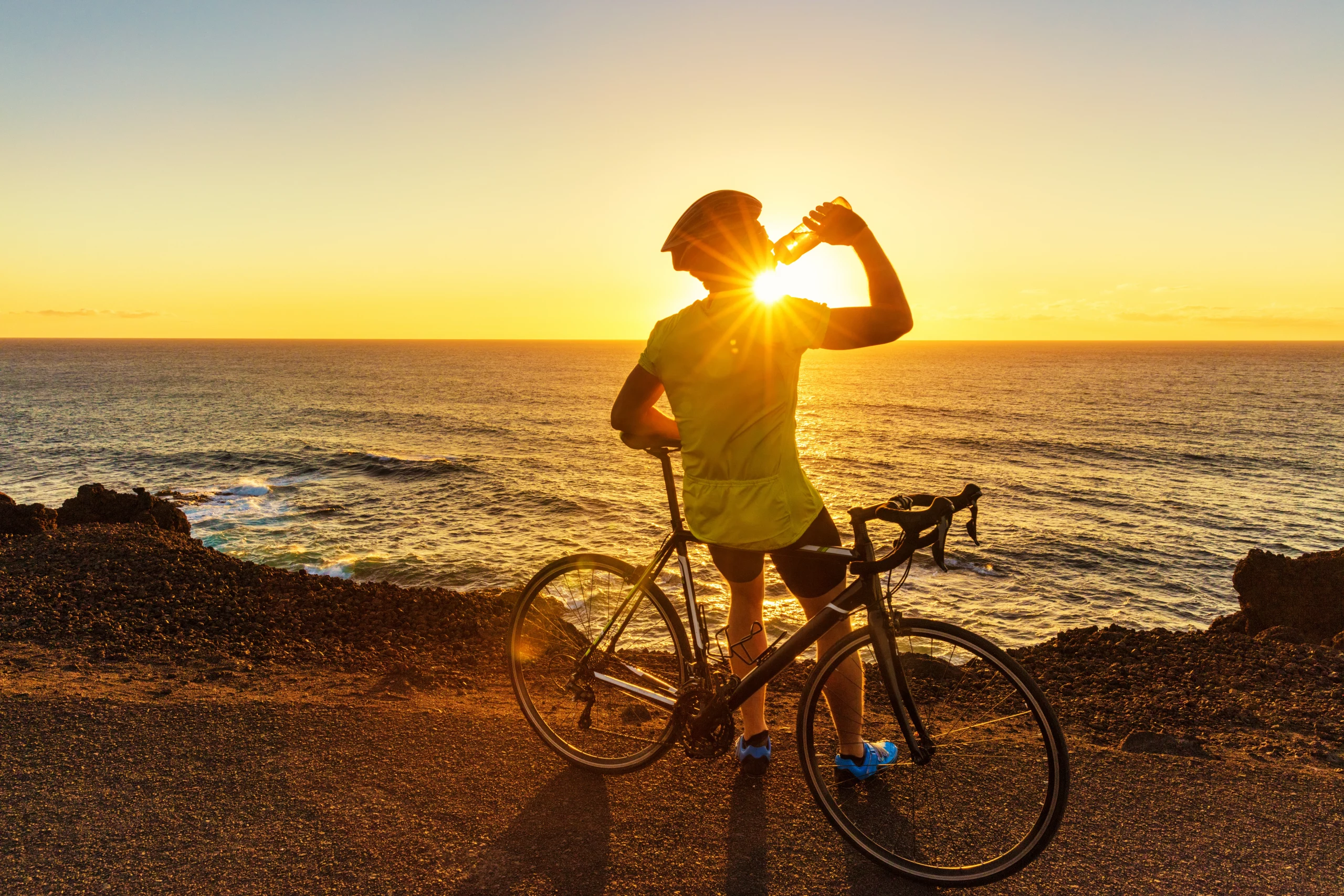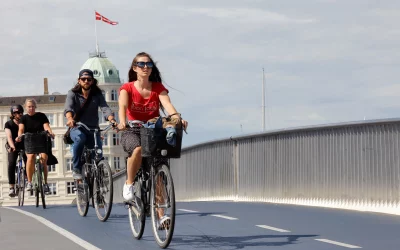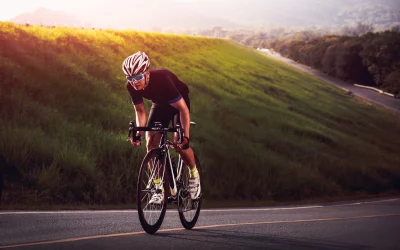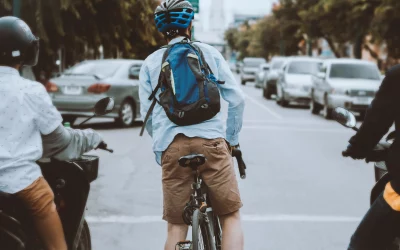Bicycle Accidents in Colorado on Major Highways and Streets
Did you know Colorado is a mecca for cyclists? Consider how many cycling tours and races occur around the state each month. That is only for bicycle events. Thousands of Floridians use the Sunshine State’s roads and trails for fitness and transportation daily.
However, the cycling landscape in Colorado is not all bright. On Colorado’s roadways, cyclists confront tremendous hazards.
According to the Colorado Department of Highway Safety and Motor Vehicles (DHSMV), over 6,500 bicycle accidents (collisions with motor vehicles) occurred in 2018, resulting in 148 cyclist deaths and 6,175 cyclist deaths injuries.
In other words, the vast majority of recorded bicycle accidents included an injured rider, a rate significantly greater than that of any other form of a vehicle accident. If a cyclist is involved in a bicycle collision with a motor vehicle, the rider is likely to suffer serious injuries, if not fatalities.
In this blog article, we’ll examine bicycle accidents in Colorado in detail, including where they occur, why they occur, and what motorists and cyclists can do to avoid them. Call an expert bicycle accident attorney immediately if you’ve been injured in a road cycling accident in Colorado.
Road Cycling Accidents in Colorado by the Numbers
According to DHSMV, the number of bicycle-motor vehicle collisions decreased in Colorado from 2015 to 2018, although modestly. However, the number of injuries and deaths in such collisions has been relatively stable since 2015.
And, if anything, early data for 2019 as of the date of this writing indicate a reversal of the trend. According to statistics from the Department of Highway Safety and Motor Vehicles and the National Highway Transportation and Safety Administration, the state was on track to have the greatest number of bicycle collisions, injuries, and deaths in a decade through March 2019.
According to the same statistics, Colorado has the terrible distinction of being the country’s deadliest state for bicycles. Although the state accounts for just 6% of the US population, it accounted for a staggering 16% of the country’s bicycle fatalities in 2017.
Of fact, documented collisions with motor vehicles are just one sort of bicycle mishap. According to a 2005 Colorado Department of Transportation survey, just a tiny percentage of bicycle crashes—roughly one-in-five—are reported to the police.
And, although the majority occur on roadways (often without bike lanes), many also occur on sidewalks and bike paths. In other words, although the DHSMV data are significant and concerning, they likely reflect simply the tip of the iceberg in terms of the number and severity of bicycle incidents in Colorado each year.
Three Common Locations for Road Cycling Accidents
For the avoidance of doubt, road bicycle accidents occur on the road. However, which routes and under what circumstances?
ON AN OPEN HIGHWAY
As mentioned before, data indicates that most road biking incidents occur on highways without dedicated bicycle lanes. Additionally, according to NHTSA statistics, almost two-thirds of all biking deaths occur on routes other than junctions.
Experiential evidence demonstrates why this is the case. The fewer space bicycles have to maneuver on the road and automobiles have to overtake riders, the higher the likelihood of a collision.
IN METROPOLITAN REGIONS
Perhaps predictably, the NHTSA reports that more fatal bicycle accidents occur in urban areas than rural regions. DHSMV data at the state level corroborates this. Annually, the most bicycle accidents occur in Colorado’s most populous counties, including Denver, Arapahoe, El Paso, and Pueblo.
AT CROSSROADS
Around a quarter of all bicycle deaths occur at crossings, especially those lacking crosswalks in metropolitan areas. Accidents at these conflict locations are caused by vehicles and bicycles failing to respect traffic regulations and cede the right of way.
Trucks may be especially dangerous to cyclists, who may find themselves in the blind zone of a truck and risk getting run over as the vehicle makes a right-hand turn. According to the NHTSA, the most frequent site of impact in incidents involving heavy trucks and buses is on the right side of the vehicle.
According to NHTSA statistics, fatal bike accidents occur around the same time during daylight and darkness. However, the most hazardous time of day is the late afternoon and evening (between 3:00 p.m. and midnight), when more than half of all bicycle accidents occur regardless of the season.
Why Do Road Cycling Collisions Occur?
Researchers point to a range of variables that lead to bicycle-motor vehicle collisions. Here is a synopsis.
Non-Compliance with Traffic Laws, including Speeding and Inadequate Separation
Motorists are typically aware of the need to adhere to traffic laws. Cyclists, on the other hand, often lack such comprehension. Who hasn’t seen a cyclist go straight past a stop sign and into an intersection with oncoming traffic?
However, as the Colorado Bicycle Association summarizes, cyclists in the Sunshine State must follow traffic regulations just like any other road user. The regulations are in place to safeguard all road users, including bicycles, pedestrians, and automobiles.
However, we cannot place all responsibility for non-compliance with traffic laws on bikers. While motorists are typically aware of how to share the road safely with other motor vehicles, they often lack expertise and awareness of cycling.
For example, drivers are unaware that, although cyclists must attempt to ride as far to the right as possible, they have the right to fill a full traffic lane if necessary.
Additionally, motorists routinely violate their legal responsibility not to pass a cyclist unless they can maintain a space of at least three feet between their cars and the bicycle. And when vehicles accelerate around and near bikers, the danger of a deadly collision increases tenfold.
The bottom line is that everyone who uses the road must obey the law. When they are not, accidents occur.
Alcohol-related Impairment
According to the NHTSA, alcohol is a factor in 37% of fatal bicycle accidents. Although cyclists cause somewhat more accidents than motorists, the issue is substantial for both groups. We do not need to go through all of the reasons why drinking and driving are harmful. To summarise, everyone who drinks and drives/rides puts himself and others in grave danger.
Insufficient Visibility
Accidents involving motor vehicles and bicycles often occur due to motorists and cyclists failing to perceive one another. This is true in a variety of situations:
- At night on unlit roads, particularly when cyclists fail to wear reflective clothing and use front and rear lamps (as required by law);
- At sunrise and sunset, especially when glare impairs driver vision;
- In blind vehicle blind spots, particularly when cyclists ride or sit in the blind spot of a large truck or bus; and
- In daylight, if cyclists wear clothing that blends into the background.
Motorists and bikers alike are responsible for avoiding low visibility conditions. Motorists should keep their headlights on and always have a pair of sunglasses (ideally polarised) on hand.
Cyclists should wear reflective clothes (fluorescent colors are best) and always equip their bikes with head and rear lights. All parties should adhere to recommended practices for blind spots.
Doorings—An Unusual Type of Cycling Accident
The characteristics outlined above pertain to collisions between a motor vehicle and a bicycle that occur when both are normally in motion. However, a distinct category of road bike accidents includes crashes between bicycles and stopped automobiles. These collisions are referred to as doorings or being doored by cyclists.
When an occupant of a stopped (typically parked) automobile or truck opens a door straight into the path of a bicycle coming from behind, this is referred to as dooring. The bicycle collides head-on with the open door, often propelling the rider over the handlebars and even through the door into the street.
What results in dooring? Often, the cause is simply inattention on the car passenger, who fails to look over their shoulder to the street before opening the door. The Dutch Reach is a safety procedure that minimizes the possibility of doorings.
It’s a straightforward behavioral modification: the person reaches for the door handle with their inside hand, causing the occupant to turn slightly in their seat and providing vision to any vehicle coming from behind.
How to Avoid Cycling Accidents on the Road
Both motorists and bikers share responsibilities for preventing bicycle accidents. Apart from the many possible causes of bicycle accidents, the following are some tried-and-true tactics that both groups may adopt to help minimize the incidence of bicycle accidents in Colorado.
Three Pointers for Motorists
The Colorado Bicycle Association’s resources website, linked above, includes simple explanations of the regulations that cars must observe while sharing the road with bikes. Learn about them!
Familiarize yourself with cycling-related traffic legislation. Understanding cyclists’ rights and responsibilities will enable you to anticipate their conduct and avoid unneeded irritation behind the wheel.
Treat bicycles as you would any other vehicle, and please use common courtesy. Avoid tailgating. Avoid becoming combative with them. Avoid driving recklessly near them. Avoid speeding near them. They have the same right as you have to use the road.
Keep an eye out for bikers in your blind zones. Due to a condition called inattentional blindness, drivers often fail to perceive bicycles (and motorcyclists) in their blind zones, even when they check them.
Stated, we are more likely to notice cars in our mirrors that we anticipate seeing than those we do not. Therefore, if you glance into your mirrors or turn to check a blind area, mentally prepare for the possibility of seeing a bicycle or motorbike. If you do, your chances of seeing one are increased.
Four Suggestions for Cyclists
FAMILIARIZE YOURSELF WITH CYCLING-RELATED TRAFFIC LEGISLATION.
While this is a duplicate of the advice for motorists, it bears repeating. As a cyclist, you are subject to the same fundamental set of rules as automobiles. You do not have special rights just because you generate your electricity. You cannot afford to disregard red signals. You are not permitted to weave in and out of traffic lanes. You cannot avoid signaling. These guidelines are in place primarily for your protection.
RIDE LARGE.
Similarly, consider yourself to be a car that has every right to share the road. When possible, you should keep to the right, but if that is not possible, you should take up the whole lane and ride with the same degree of predictability and authority as any other vehicle. While this may irritate motorists, it is their issue, not yours.
BE POLITE
Be aware that you are the slowest person on any route shared by motorists. If automobiles and trucks can safely pass you, make it as simple as possible for them to do so. Continue to the right. Allow them to pass, and extend a thank you when they do the same for you. We can all coexist.
MAKE YOURSELF NOTICEABLE.
While bright, unusual color combinations may not be your style, they may save your life. The greater contrast you have with your road surroundings, the more likely cars will see you. Additionally, always wear luminous clothing and never ride between nightfall and morning without head and tail lighting (better yet, use them at all times).
Road Bicycle Accidents Are Dangerous, but They Can Be Avoided
We Floridians have an obligation to one another to prevent bicycle accidents in our state. We can make it happen if we work together. By following basic safety precautions and treating one another with respect and consideration, we can help make our state a more pleasant and healthy place to live, work, and ride.
If you have been injured in a bicycle accident on a Colorado road, call an experienced bicycle accident attorney immediately.
If you have been injured in a bicycle collision involving another vehicle, call Warrior Law immediately. We provide free consultations to individuals in your situation and can provide experienced help in obtaining the compensation you need. To book your free consultation, call 719-300-1100 or contact us online.
Warrior Car Accident Lawyers
1902 W. Colorado Ave., Suite 100
Colorado Springs, CO 80904







